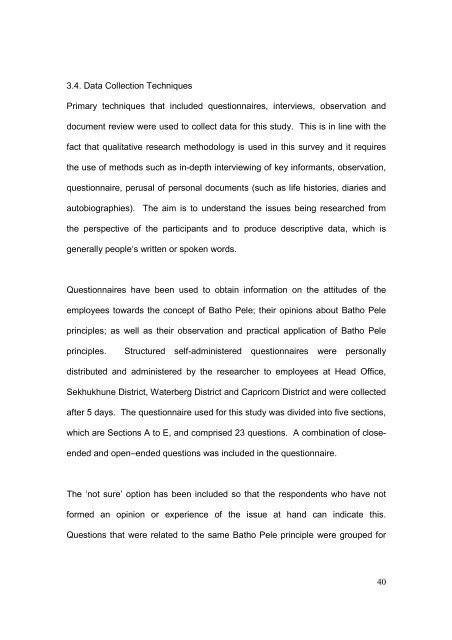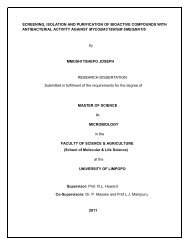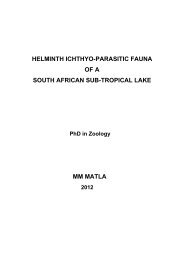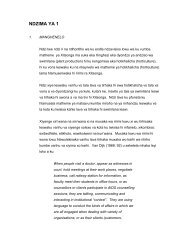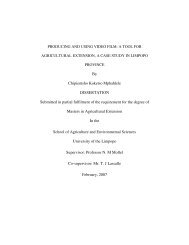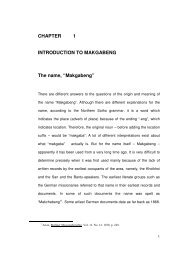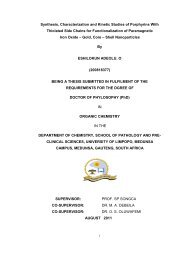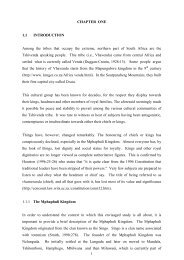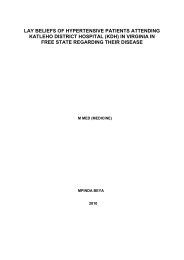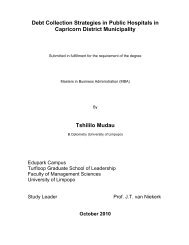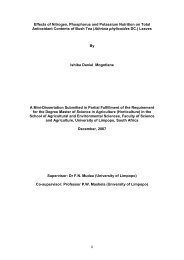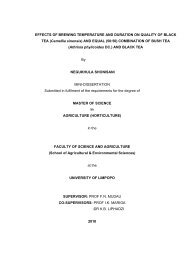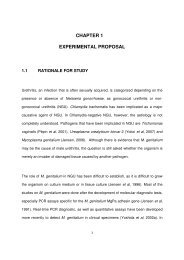An assessment of the implementation of batho pele - University of ...
An assessment of the implementation of batho pele - University of ...
An assessment of the implementation of batho pele - University of ...
Create successful ePaper yourself
Turn your PDF publications into a flip-book with our unique Google optimized e-Paper software.
3.4. Data Collection Techniques<br />
Primary techniques that included questionnaires, interviews, observation and<br />
document review were used to collect data for this study. This is in line with <strong>the</strong><br />
fact that qualitative research methodology is used in this survey and it requires<br />
<strong>the</strong> use <strong>of</strong> methods such as in-depth interviewing <strong>of</strong> key informants, observation,<br />
questionnaire, perusal <strong>of</strong> personal documents (such as life histories, diaries and<br />
autobiographies). The aim is to understand <strong>the</strong> issues being researched from<br />
<strong>the</strong> perspective <strong>of</strong> <strong>the</strong> participants and to produce descriptive data, which is<br />
generally people‘s written or spoken words.<br />
Questionnaires have been used to obtain information on <strong>the</strong> attitudes <strong>of</strong> <strong>the</strong><br />
employees towards <strong>the</strong> concept <strong>of</strong> Batho Pele; <strong>the</strong>ir opinions about Batho Pele<br />
principles; as well as <strong>the</strong>ir observation and practical application <strong>of</strong> Batho Pele<br />
principles. Structured self-administered questionnaires were personally<br />
distributed and administered by <strong>the</strong> researcher to employees at Head Office,<br />
Sekhukhune District, Waterberg District and Capricorn District and were collected<br />
after 5 days. The questionnaire used for this study was divided into five sections,<br />
which are Sections A to E, and comprised 23 questions. A combination <strong>of</strong> close-<br />
ended and open–ended questions was included in <strong>the</strong> questionnaire.<br />
The ‘not sure’ option has been included so that <strong>the</strong> respondents who have not<br />
formed an opinion or experience <strong>of</strong> <strong>the</strong> issue at hand can indicate this.<br />
Questions that were related to <strong>the</strong> same Batho Pele principle were grouped for<br />
40


